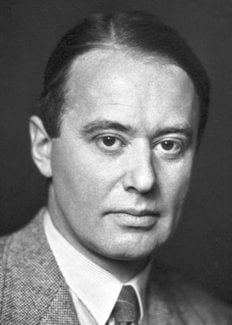Arne Tiselius
Biographical

Arne Wilhelm Kaurin Tiselius was born August 10, 1902, in Stockholm. After the early loss of his father, the family moved to Gothenburg where he went to school, and after graduation at the local “Realgymnasium” in 1921, he studied at the University of Uppsala, specializing in chemistry. He became research assistant in The Svedberg‘s laboratory in 1925 and obtained his doctor’s degree in 1930 on a thesis “The moving-boundary method of studying the electrophoresis of proteins” (published in Nova Acta Regiae Societatis Scientiarum Upsaliensis, Ser. IV, Vol. 7, No. 4) and was appointed Docent (Assistant Professor) in Chemistry from 1930 on. During the years 1931-1935 Tiselius published a number of papers on diffusion and adsorption phenomena in naturally occurring base-exchanging zeolites, and these studies were continued during a year’s visit to H.S. Taylor’s laboratory in Princeton with support of a Rockefeller Foundation Fellowship. Stimulated by many contacts with American biochemists and physical chemists during this visit, Tiselius on his return to Uppsala resumed his interest in proteins, and the application of physical methods to biochemical problems in general. This led among other things to a much improved method of electrophoretic analysis, published in the Transactions of the Faraday Society, 33 (1937) 524. This method as applied to the study of serum proteins and to a number of other biochemical problems kept Tiselius and an increasing number of collaborators occupied for the following years. In 1938 a special research professorship was established for Tiselius through a donation to the University of Uppsala by Major Herbert Jacobsson and his wife. Some space was put at the disposal of the new professor in the Institute of Physical Chemistry (Prof. The Svedberg). In 1946 biochemistry was established as an independent department and in 1950-1952 obtained a new building, the present Institute of Biochemistry.
Under the leadership of Tiselius this institute has contributed to the development and improvement of a number of useful methods in biochemistry, such as electrophoresis, chromatography, phase partition, gel filtration, etc. These methods and others have been applied to studies of large molecular weight substances, chiefly proteins and enzymes, but also polysaccharides (dextran) and nucleic acids. There has always been a close contact between the methodological work and the research into special problems where the methods find their application. Tiselius took an active part in the reorganization of scientific research in Sweden in the years following World War II. Thus he was Chairman of the Swedish Natural Science Research Council 1946-1950, and Chairman of the Research Committee of the Swedish Cancer Society 1951-1955. He was President of the International Union of Pure and Applied Chemistry 1951-1955, became Vice President of the Nobel Foundation in 1947 and President since 1960. He has also served as member of the Nobel Committee for Chemistry since 1946.
He was married (1930) with Ingrid Margareta (Greta) Dalén, daughter of city judge Per Dalén of Gothenburg. They have two children: Eva (b. 1932), married to Dr. Torgny Bohlin, Lund; and Per (b. 1934), physician at the Academic Hospital, Uppsala.
This autobiography/biography was written at the time of the award and first published in the book series Les Prix Nobel. It was later edited and republished in Nobel Lectures. To cite this document, always state the source as shown above.
Arne Tiselius died on October 29, 1971.
Nobel Prizes and laureates
Six prizes were awarded for achievements that have conferred the greatest benefit to humankind. The 14 laureates' work and discoveries range from quantum tunnelling to promoting democratic rights.
See them all presented here.
